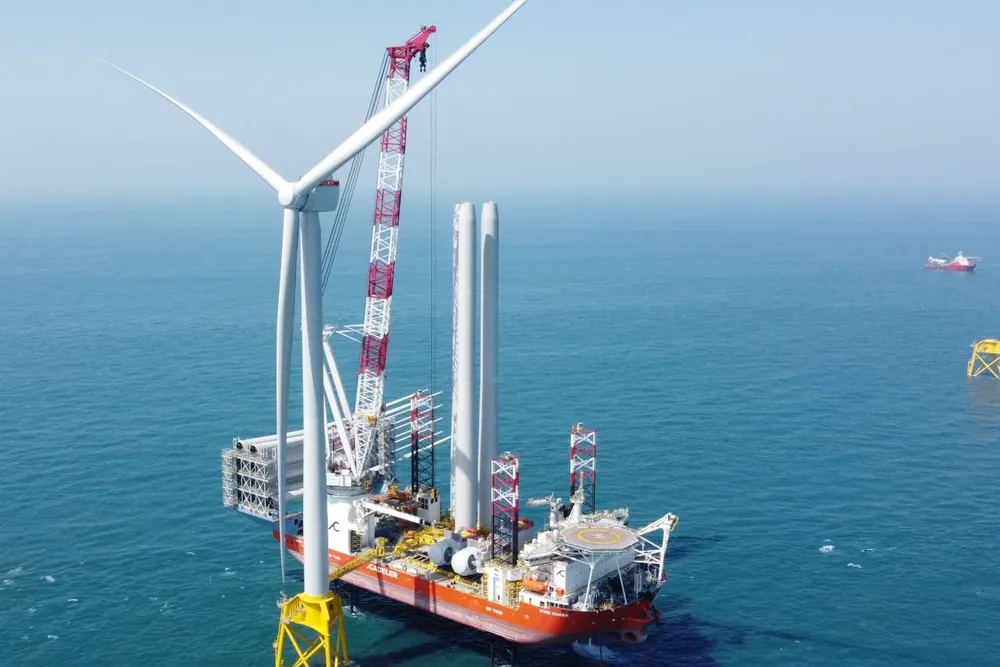Siemens Gamesa and Vestas wind turbines face down typhoon in Taiwan
Turbines at offshore wind farms in Taiwan Strait weathered Typhoon Danas and even kept producing power amid wind speeds of close to 40 metres-per-second

Hundreds of Siemens Gamesa and Vestas offshore wind turbines survived and even thrived during a typhoon that recently wreaked havoc in Taiwan, although a controversy has flared over a floating solar array that was mangled by the storm.
Typhoon Danas blew into Taiwan last week, killing at least two, injuring hundreds and destroying power lines and other infrastructure on land.
Usually, typhoons pass by Taiwan’s east coast, but Danas swept down its populous Western flank, which is also where the island’s offshore wind fleet is based.
With wind speeds close to 40 metres-per-second (m/s) and gusts that were even stronger, this presented a stern test for the hundreds of installed turbines in the Taiwan Strait.
However, Taiwan’s Ministry of Economic Affairs reported after the typhoon that the turbines had not just survived, but thrived, with many continuing to produce power at more than 90% of their nameplate capacity.
All turbines in the Taiwan Strait meet Class T typhoon standards set by the International Electrotechnical Commission, said the ministry. That means they can withstand wind speeds of 57m/s and gusts of up to 80m/s averaged over 3 seconds.
The turbines in the Taiwan Strait are all supplied by German-owned Siemens Gamesa and Denmark’s Vestas.
Fully comissioned offshore wind farms in Taiwan
Greater Changhua 1 & 2a: 900MW, 111 Siemens Gamesa SG 8.0-167 DD turbines
Yunlin: 640MW, 80 Siemens Gamesa SG 8.0-167 DD turbines
Formosa 2: 376MW, 47 Siemens Gamesa SG 8.0-167 DD turbines
Formosa 1: 128MW, 2 SWT-4.0-120 turbines and 20 SWT-6.0-154 turbines
Zhong Neng: 294.5MW, 31 Vestas V174-9.5MW turbines
Changfang & Xidao: 600MW, 62 Vestas V174-9.5MW turbines
As well as fully comissioned wind farms, there are several projects currently under construction in the Taiwan Strait.
“With over 2GW of wind turbines installed in Taiwan, we are proud to contribute to the region’s sustainable energy future with solutions that can withstand the most extreme weather conditions.”
Siemens Gamesa said its SG 14-236 model can generate power at wind speeds up to 32m/s. It also features the “High Wind Ride Through” control system, which helps maintain steady energy production even when wind speeds increase.
Normally, wind turbines shut down to protect themselves when wind speeds go over 25m/s, said the OEM. But the SG 14-236 gradually lowers its power output instead, allowing for a smoother decrease in production and keeping the grid stable.
Vestas said that all its turbines in Taiwan “remained intact and operational as usual, which suggests our technology performed well during this particular typhoon event.”
The turbines were prepared with advanced safety protocols, said Vestas, allowing them to automatically respond to changing wind conditions throughout the event.
Vestas confirmed its V174 machines continued pumping power to the grid as wind conditions remained within their “operational limits”.
Floating solar array floats back to shore
Not all of Taiwan’s offshore renewable energy infrastructure was so lucky, or sturdy, however.
Danas got the better of a floating solar test project that was damaged and eventually drifted back to shore, reportedly scattering debris over a more than a kilometre stretch of coastline.
The floating array was developed by Sun Rise E&T Corp, reportedly covering an area of 160,000 square meters.
Sun Rise said in a statement that the test site is mainly used to test the strength of the solar platform and its ability to resist wind and waves, with no actual power generation. It claimed the platform was in the process of being demolished when the typhoon hit.
This statement has not, however, quelled significant interest and concern regarding damage to the structure.
The ministry of economic affairs has issued several statements trying to calm public concerns about the incident, denying that the mangled components could be hazardous waste or released toxins.
(Copyright)